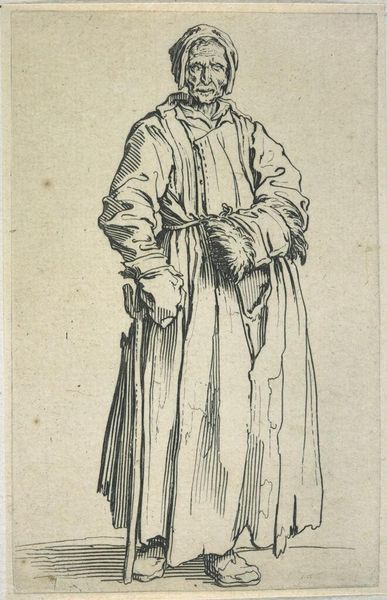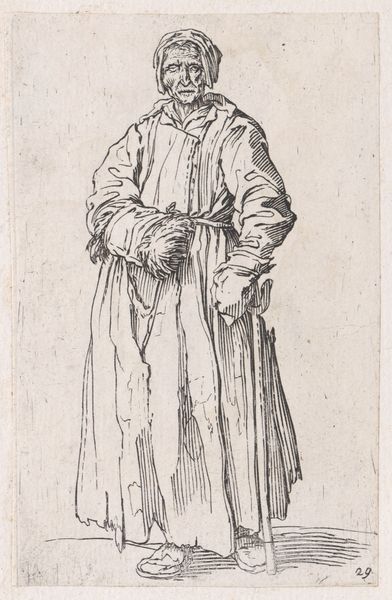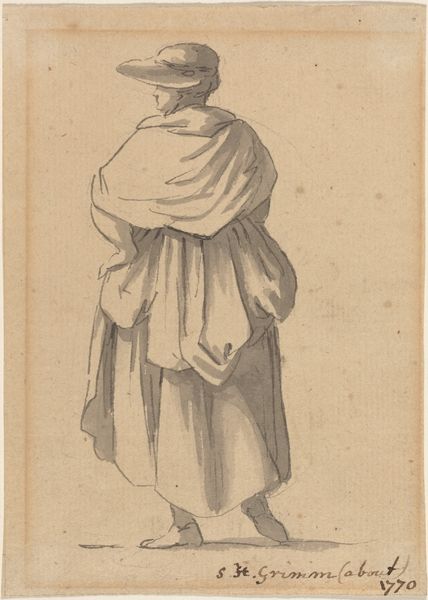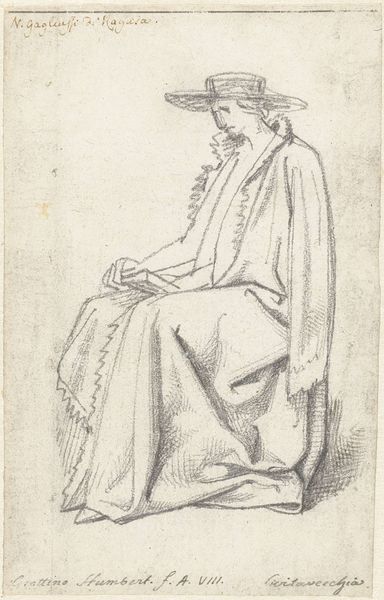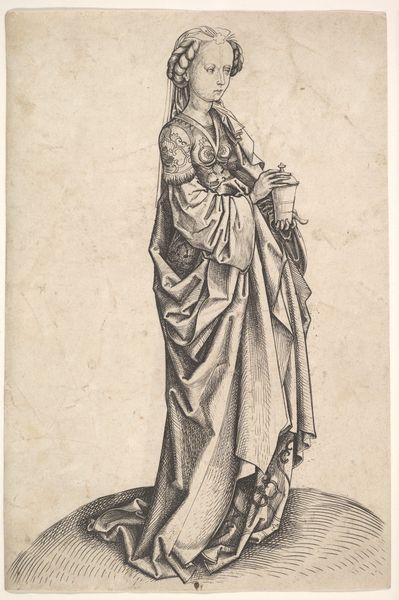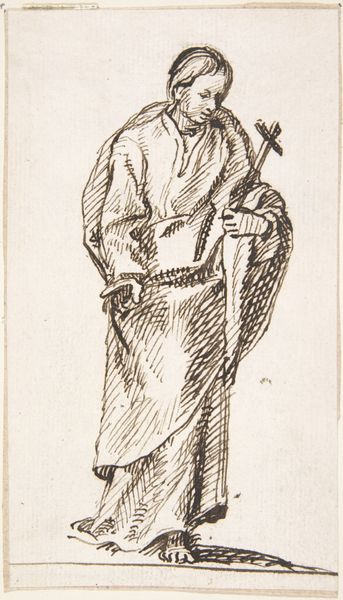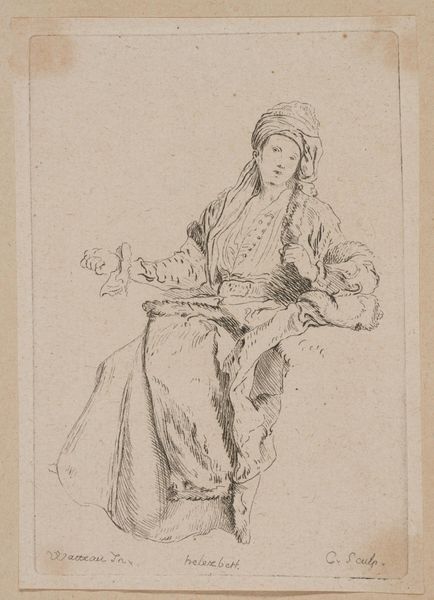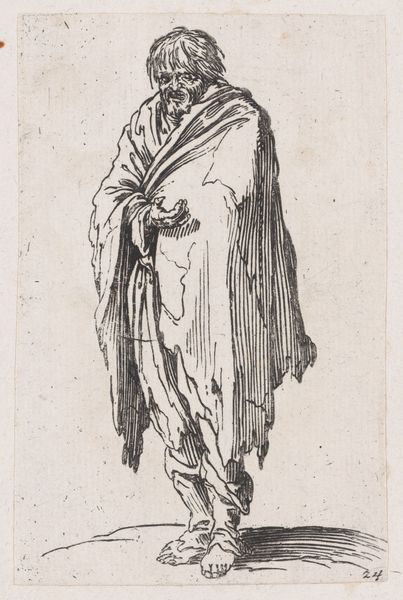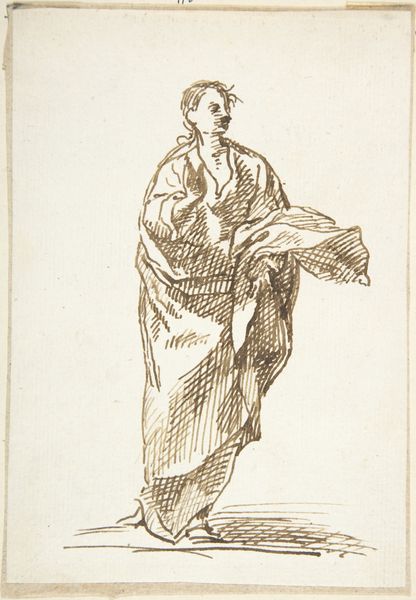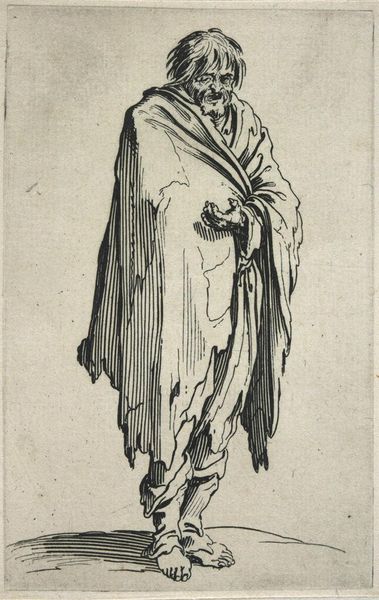
drawing, print, ink, pen
#
portrait
#
drawing
#
ink drawing
#
baroque
# print
#
etching
#
figuration
#
ink
#
pen
Dimensions: 7-1/16 x 4-9/16 in. (18.0 x 11.6 cm)
Copyright: Public Domain
Curator: This is "Standing Figure of an Evangelist," an ink drawing created between 1695 and 1705 by Pedro Duque Cornejo, currently held at the Metropolitan Museum. Editor: My first impression is how the dynamic line work breathes life into the figure. It feels almost as if he’s caught mid-stride, deep in thought. Curator: That's a great observation. Cornejo was working within a specific historical context; namely, the Baroque period, where dramatic movement and emotional intensity were key. Prints such as these offered wide dissemination of religious ideals, becoming powerful tools in shaping public sentiment. Editor: It also begs the question, "which Evangelist?". Looking closely, I see no explicit identifiers – no bible, no specific symbols. Perhaps this ambiguity is intentional, designed to speak to broader notions of faith, piety, and moral leadership during times of upheaval. Considering feminist theory, could this faceless religious persona contribute to patriarchal structures? Curator: Absolutely, the lack of identifiers provides an opportunity to read this in diverse ways depending on one's social position and intersectional consciousness. Thinking historically, it's critical to acknowledge the role prints had in bolstering Counter-Reformation efforts and solidifying social norms, despite, or perhaps because of, societal resistance. Consider also the political power linked with disseminating particular ideologies about class, religious doctrine, and divine authority through art accessible to wider audiences than grander, costly forms of artistic production allowed. Editor: So, what at first appears to be simply a figure becomes emblematic of a very specific social, religious, and political agenda in late seventeenth century Europe? Curator: Exactly. While ostensibly portraying an Evangelist, it actively participates in constructing and maintaining certain beliefs, reflecting on questions regarding how such prints impacted communities, individuals, and, naturally, other artists responding directly or indirectly through their artwork and artistic visions. Editor: Seeing the figure's role now in distributing political ideology complicates its simple portrayal, opening new conversations about its effects during and since the artwork’s initial appearance. Curator: Agreed, the print continues offering fresh ways to reassess historical and social conditions connected with representation, authority, and cultural impact.
Comments
No comments
Be the first to comment and join the conversation on the ultimate creative platform.

